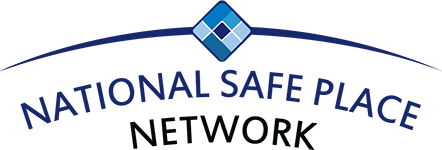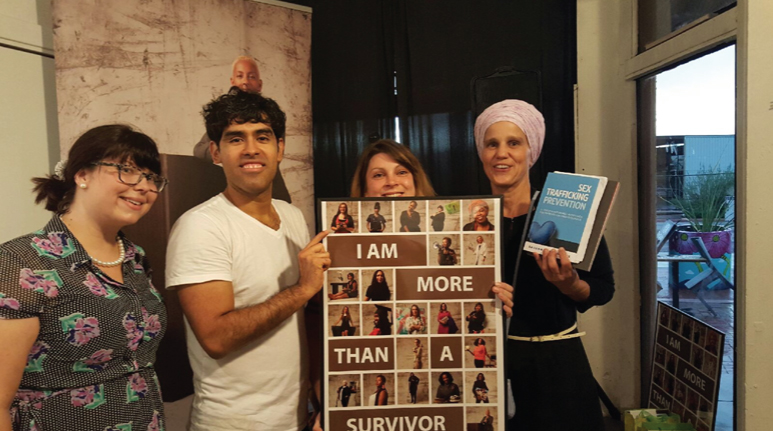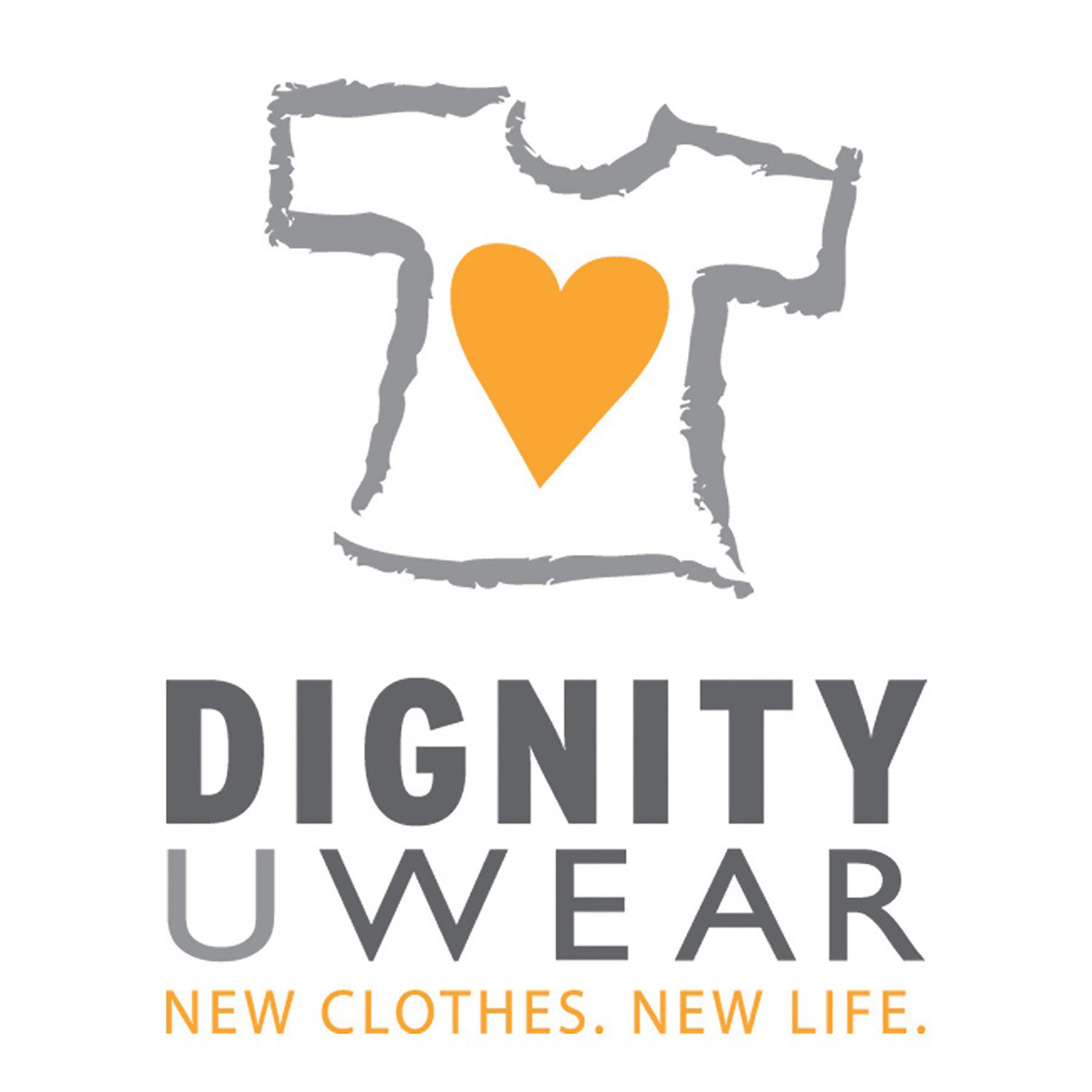January is National Slavery and Human Trafficking Prevention Month
On December 31, 2014, President Barack Obama called upon businesses, national and community organizations, families, and all Americans to recognize the vital roles we can play in ending all forms of slavery as he proclaimed the month of January to be National Slavery and Human Trafficking Prevention Month.
We encourage you to join us throughout January as we come together to increase awareness of human trafficking and combine our efforts to prevent it. Each week, the following topics will be highlighted to help move awareness and prevention efforts forward. These topics include: About Human Trafficking, Raising Awareness, Human Trafficking Prevention, and Celebrating Survivors. The topics were created to make it easy for YOU to make a difference. Learn more, share the resources with others, take action if you suspect trafficking, and celebrate the survivors of this terrible crime.
Ready to start making a difference now?
1. Spread the word. Let others know what you’re learning about human trafficking each week. If you’re using social media, use the primary hashtag #EndHumanTrafficking as well as the corresponding hashtag for the week. Show your support to #EndHumanTrafficking.
Sample Social Media Posts:
Facebook:
While slavery is often considered to be a thing of the past, we know that millions of men, women and children are trafficked in the U.S. and other countries around the world. Traffickers use force, fraud or coercion to lure victims into labor or commercial sexual exploitation. January is National Slavery and Human Trafficking Prevention Month, a time to share information about slavery and human trafficking in order to effect change that will ultimately #EndHumanTrafficking.
Twitter:
It’s National Slavery & Human Trafficking Prevention Month. Learn how you can get involved in the fight to #EndHumanTrafficking https://bit.ly/2QDZCre
2. Check back. Visit this page each week for topic updates, resources, and social media post samples.
About Human Trafficking:
The Trafficking Victims Protection Act of 2000 (TVPA) defines “severe forms of human trafficking” as:
- The recruitment, harboring, transportation, provision, or obtaining of a person for:
- Sex trafficking in which a commercial sex act is inducted by force, fraud, and coercion, or in which the person inducted to perform such act has not attained 18 years of age; or,
- Labor or services, through the use of force, fraud, and coercion for the purpose of subjection to involuntary servitude, peonage, debt bondage, or slavery.
Trafficking in persons, or human trafficking, is a widespread form of modern-day slavery. It is a crime that involves the exploitation of a person for the purpose of compelled labor or a commercial sex act through the use of force, fraud, or coercion. If a person younger than 18 is inducted to perform a commercial sex act, it is considered a crime regardless of whether there is any force, fraud, or coercion. Human traffickers target all populations around the world and in our own neighborhoods: women, men, youth, children, citizens, non-citizens, English speakers, non-English speakers. Some groups, such as runaway and homeless youth, native individuals, domestic violence victims, and LGBTQ population are particularly vulnerable to human trafficking. Victims are recruited and lured by traffickers with the false promise of a better life, love, and job opportunities. Later, traffickers use violence, threats, and manipulation to controls their victims. Homeless youth who are forced to trade sexual acts with an adult in exchange of something of value (i.e. shelter, food) are considered victims of domestic sex trafficking.
Human trafficking is the fastest growing criminal enterprise of this century, growing from a nine billion to a 32 billion dollar global industry in a little over a decade. There is no typical trafficker, and it has been shown that traffickers can be parents or other close family members, family friends, boyfriends/girlfriends, employers, smugglers or strangers. Traffickers can be part of an organized enterprise or can work alone. Street gangs, for example, are known to traffic minors into the drug and sex markets. Don’t ignore the facts. Slavery exists and we can work together to end it.
Resources:
Sample Social Media Posts:
Share this week’s information and resources on your social media page(s). Use the hashtag #SlaveryExists. Feel free to use the following sample social media posts below and download this week’s social media image at: https://nspn.memberclicks.net/assets/images/stop%20labor%20trafficking.jpg
Facebook:
There are several types of #humantrafficking. Learning more is the first step to making a difference. #EndHumanTrafficking: https://www.dhs.gov/blue-campaign/what-human-trafficking
Twitter:
Believe it or not, #slaveryexists. Chances are, it's happening nearby. Learn more: https://bit.ly/2rIMCbz #EndHumanTrafficking
Raising Awareness:
Are you “aware” of how much raising awareness makes a difference? It’s not uncommon to hear someone ask “How does raising awareness actually help make a difference?” Unfortunately, some people choose to ignore awareness campaign efforts because they believe they are not making a difference. If you’ve heard this question – or even asked it yourself – try breaking the term “raising awareness” down.
Raising – to increase the amount, level, or strength of.
Awareness – knowledge or perception of a situation or fact.
Now ask yourself – Have you ever been able to make an actual difference for something you know nothing about? Raising awareness increases the amount of knowledge you have about a specific topic such as human trafficking, therefore increasing the efforts to put an end to it. You are strongly encouraged to learn more about human trafficking. It’s up to you to work together with others to end human trafficking. Consider the cost of your decision.
Resources:
Sample Social Media Posts:
Share this week’s information and resources on your social media page(s). Use the hashtag #ConsiderTheCost. Feel free to use the following sample social media posts below and download this week’s social media image at: https://nspn.memberclicks.net/assets/images/NSPN/consider-the-cost.jpg
Facebook:
Today is Human Trafficking Awareness Day – a time to share information, statistics and resources about human trafficking that occurs in the U.S. and across the world. In order to combat modern slavery, it’s crucial to inform and educate one another about the issue. The more people who know about human trafficking – the more people who may be willing to join the fight to #EndHumanTrafficking. Please click here to view resources and information that will help you raise awareness of human trafficking: http://www.nspnetwork.org/national-slavery-and-human-trafficking-prevention-month #ConsiderTheCost
Twitter:
Make some noise and raise awareness about human trafficking: http://bit.ly/1mGJmF2 #EndHumanTrafficking #ConsiderTheCost
Human Trafficking Prevention:
Understanding human trafficking is just one of the first necessary steps that must be taken in order to #stopslavery. But what’s next? Take steps to stop slavery by learning how to recognize the signs, talking to youth about what steps they can take to protect themselves and others, reporting suspected trafficking, and more.
By the time someone has been trafficked the system has already failed at what should be its primary goal: PREVENTION. We need to work to prevent human trafficking from occurring so the need for services doesn’t exceed the availability of services. Prevention efforts are not often sensational; however, focusing on preventing some of the risk factors that lead to an increased vulnerability to human trafficking will prove the adage “an ounce of prevention is worth a pound of cure.”
Have you ever wondered what to expect from prevention efforts? A recent NSPNsights blog An Ounce of Prevention is Worth a Pound of Cure shares:
Prevention efforts:
- provide information, resources, and safety planning skills to potential victims;
- attempt to reduce the likelihood that an individual will become a trafficker;
- change societal norms that blame victims;
- empower community members to recognize and respond to instances of trafficking; and,
- advocate for changes to policies and laws to reduce the occurrence of trafficking across vulnerable populations.
Read more of this blog, including Nine Principles of effective Prevention Programs here: https://nspnetwork.wordpress.com/2016/01/14/an-ounce-of-prevention-is-worth-a-pound-of-cure/
Resources:
Sample Social Media Posts:
Share this week’s information and resources on your social media page(s). Use the hashtag #StopSlavery. Feel free to use the following sample social media posts below and download this week’s social media image at: https://nspn.memberclicks.net/assets/images/NSPN/stop-slavery.jpg
Facebook:
How do we #EndHumanTrafficking and #StopSlavery? It all starts with prevention. Learn the signs of human trafficking, know who to contact for help and understand what you can do to make your community a safer place: https://polarisproject.org/human-trafficking/recognize-signs
Twitter:
How do we #EndHumanTrafficking? It starts with prevention. https://bit.ly/2MIJzaE #StopSlavery
If you think you’ve encountered a victim of human trafficking, call the national human trafficking hotline. In addition to the above indicators, the hotline’s multi- lingual operators can help service providers with identification. This hotline may also help you connect victims-survivors to available resources and connect you to the appropriate law enforcement authorities. NATIONAL HUMAN TRAFFICKING HOTLINE: 888-373-7888
Celebrating Survivors:
Individuals who overcome tragedy, such as human trafficking, are survivors. They are a living example that a person can get beyond their victimization and become a survivor. Organizations serving victims of human trafficking often work with survivors to offer positive coping strategies and act as role models for those in desperate need of relief. Many organizations use the survivor-leadership model which helps develop the leadership and advocacy skills of human trafficking survivors for awareness-raising and advocacy efforts in the anti-human trafficking movement. This model allows organizations to work with survivors by providing opportunities to selflessly share their stories without the risk of further exploitation.
As survivors are celebrated this week, it’s also important to recognize organizations working to support survivors and end human trafficking. NSPN would like to highlight a member organization and licensed Safe Place agency, Tumbleweed Center for Youth Development.
Tumbleweed Center for Youth Development shares one of their success stories below:
“Sarah* arrived at Tumbleweed’s day resource center in February 2015. She had been trafficked through strip clubs and ended up in Arizona to reconnect with her birth family. She found herself homeless and being exploited. She was able to leave the life of trafficking shortly after being able to get into a shelter for young adults. Sarah has accessed our Learning Center, job skills development programs and regularly attended our Sex Trafficking Awareness and Recovery group while in the shelter. With the assistance of this grant, Sarah’s case manager connected her to our legal provider as she had concerns about warrants for her arrest in other states. With the knowledge provided about her criminal record she is moving forward toward applying for a finger print clearance card. After residing in our shelter for a couple months, she was able to move into her own place with the assistance of our program. In November 2015, she received multiple job offers, has been working full time and is able to pay a portion of her rent and bills.”
*Name and some dates where changed
You may see more of this NSPN member highlight at: http://www.nspnetwork.org/nspn-member-and-safe-place-agency-works-to-end-human-trafficking
Here are some additional organizations working with and celebrating victims-survivors of human trafficking:
Resources:
Sample Social Media Posts:
Share this week’s information and resources on your social media page(s). Use the hashtag #StandWithSurvivors. Feel free to use the following sample social media posts below and download this week’s social media image at: https://nspn.memberclicks.net/assets/images/NSPN/stand-with-survivors.jpg
Facebook:
We stand with victims-survivors of human trafficking and celebrate the incredible work being done by organizations across the country working the #EndHumanTrafficking. Their experiences, challenges and triumphs are both heart-breaking and awe-inspiring. Click here to read stories of victim-survivors of human trafficking: https://www.nspnetwork.org/nspn-member-and-safe-place-agency-works-to-end-human-trafficking #StandWithSurvivors
Here is a NSPN Member and Licensed Safe Place agency who is sharing their efforts to combat human trafficking in their community: http://www.nspnetwork.org/nspn-member-and-safe-place-agency-works-to-end-human-trafficking
Twitter:
We stand with victims-survivors & celebrate the great work being done to #EndHumanTrafficking #StandWithSurvivors https://bit.ly/2Qa5dqh
Our work to end human trafficking does not end in January. This issue continues and the work to end and prevent this crisis should continue as well. Together we can end human trafficking.
|







